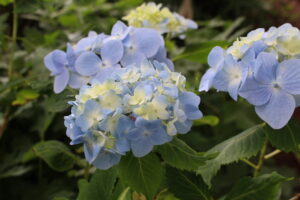Hydrangea Resources
go.ncsu.edu/readext?1074527
en Español / em Português
El inglés es el idioma de control de esta página. En la medida en que haya algún conflicto entre la traducción al inglés y la traducción, el inglés prevalece.
Al hacer clic en el enlace de traducción se activa un servicio de traducción gratuito para convertir la página al español. Al igual que con cualquier traducción por Internet, la conversión no es sensible al contexto y puede que no traduzca el texto en su significado original. NC State Extension no garantiza la exactitud del texto traducido. Por favor, tenga en cuenta que algunas aplicaciones y/o servicios pueden no funcionar como se espera cuando se traducen.
Português
Inglês é o idioma de controle desta página. Na medida que haja algum conflito entre o texto original em Inglês e a tradução, o Inglês prevalece.
Ao clicar no link de tradução, um serviço gratuito de tradução será ativado para converter a página para o Português. Como em qualquer tradução pela internet, a conversão não é sensivel ao contexto e pode não ocorrer a tradução para o significado orginal. O serviço de Extensão da Carolina do Norte (NC State Extension) não garante a exatidão do texto traduzido. Por favor, observe que algumas funções ou serviços podem não funcionar como esperado após a tradução.
English
English is the controlling language of this page. To the extent there is any conflict between the English text and the translation, English controls.
Clicking on the translation link activates a free translation service to convert the page to Spanish. As with any Internet translation, the conversion is not context-sensitive and may not translate the text to its original meaning. NC State Extension does not guarantee the accuracy of the translated text. Please note that some applications and/or services may not function as expected when translated.
Collapse ▲Hydrangeas are an incredibly popular landscape plant and many gardeners have questions about caring for hydrangeas. It is important to know what species of hydrangea you have in your garden in order to prune correctly. The NC Extension Gardener Plant Toolbox is a great resource for learning about different species of hydrangeas (and other plants). Here are additional resources to help you with hydrangea pruning.
A Guide to Pruning Hydrangeas
|
Pruning Hydrangeas: A Simple Guide for When to do it! |
||
| Old Growth vs. New Growth: The winter dormant period is the reference point
Old growth is the stems and branches that grew prior to the plant going dormant. New growth is the stems and branches that grow after the latest winter dormant period. |
||
| Hydrangea Species | When do I prune it? | On what growth do the blooms appear? |
| Hydrangea anomala subsp. petiolaris Climbing Hydrangea |
After Flowering (Summer) |
On old growth |
| Hydrangea arborescens Smooth Hydrangea |
Late winter/Early Spring (Before new growth) |
On new growth |
| Hydrangea macrophylla Bigleaf Hydrangea Mophead Hydrangea |
After Flowering (Summer) |
On old growth |
| Hydrangea paniculata Panicle Hydrangea |
Late winter/Early Spring (Before new growth) |
On new growth |
| Hydrangea quercifolia Oakleaf Hydrangea |
After Flowering (Summer) |
On old growth |
|
Hydrangea x Remontant cultivars |
Prune either in late winter/early spring or after the first flush of flowers has faded | Blooms on both old growth and new growth |
Other Helpful Resources about Hydrangeas
- Pruning Hydrangeas video featuring Mark Weathington at JC Raulston Arboretum
- Plants, Pests, and Pathogens Webinar – Focus on Hydrangeas
General information on shrubs and landscape plants:
- Planting Shrubs Correctly (Clemson Extension)
- NC Extension Gardener Plant Toolbox
- University of Georgia Ornamentals
- Clemson Home & Garden Information Center
- Missouri Botanical Garden Plant Finder
Want to see hydrangeas? We suggest you check out:
Information on this page was compiled by Brad Goodrum, NC State Extension Master Gardener volunteer of Forsyth County.





